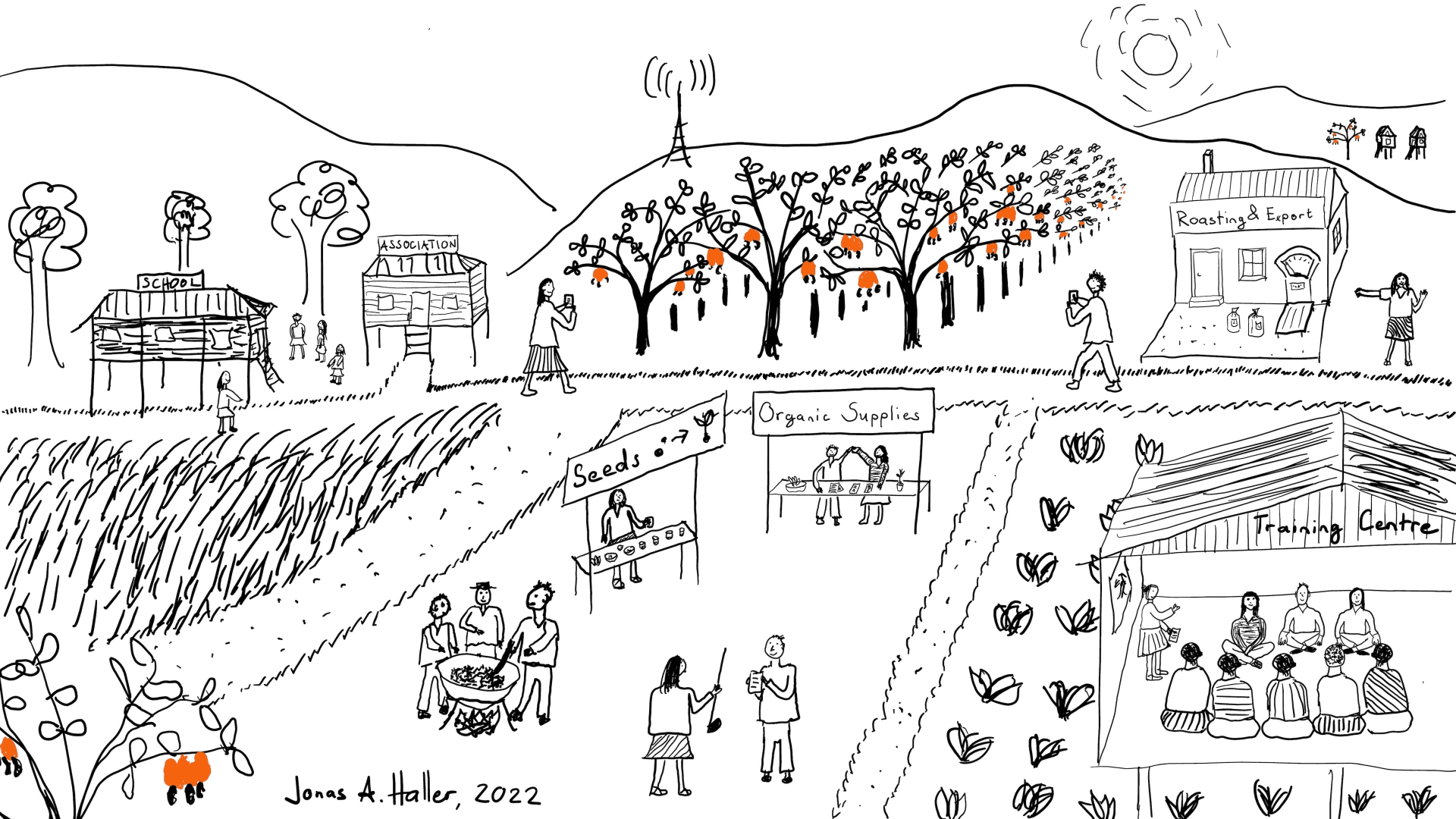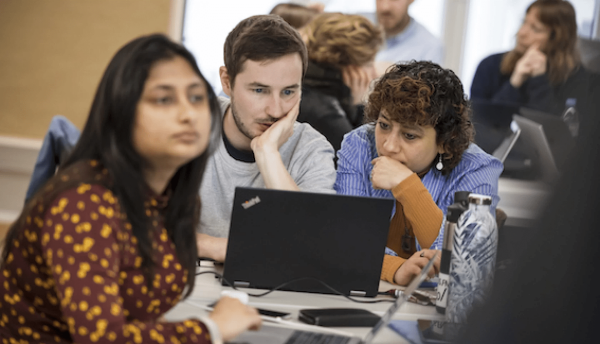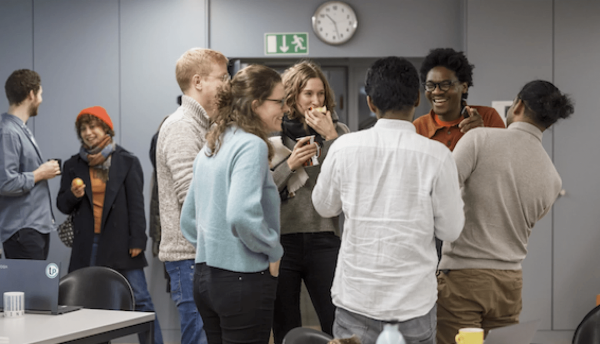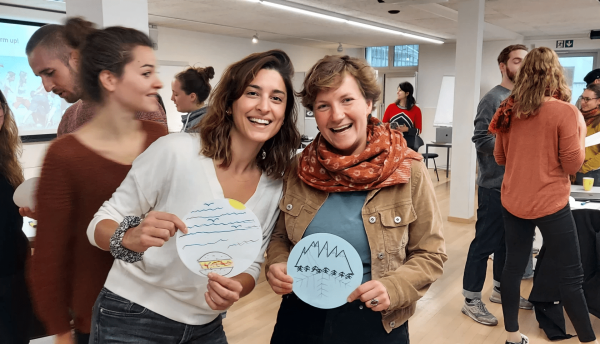Interdisciplinary Sustainable Development Challenge
The Sustainable Development Goals (SDGs) represent a complex and ambitious agenda, requiring practitioners in International Development Cooperation to navigate interdisciplinary challenges.

In the Autumn Semester of 2022, students enrolled in the ETH NADEL – MAS in Development and Cooperation engaged in an Interdisciplinary Sustainable Development Challenge. This initiative, worth 4 ECTS credits, required students to form interdisciplinary teams and tackle real-life sustainable development challenges sourced from partner international cooperation organizations. The project aimed to develop students' abilities in analyzing sustainable development challenges systematically, designing evidence-based solutions, and fostering competencies such as problem-solving, creativity, teamwork, and communication.
Context and teaching mode:
The Sustainable Development Goals are both complex and ambitious. International Development Cooperation practitioners need to be able to effectively address complexity, work in interdisciplinary and intercultural teams, analyse issues using evidence, and think creatively to find solutions. Working in interdisciplinary teams can bring immense value, but it can also be challenging and requires specific competencies and practice.
In the Autumn Semester of 2022, students enrolled in the ETH NADEL MAS in Development and Cooperation undertook an interdisciplinary sustainable development challenge. They formed groups of three with different disciplinary backgrounds and tackled real-life sustainable development challenges submitted by partner international cooperation organisations.
The Interdisciplinary Sustainable Development Challenge is worth 4 ECTS credits and is a compulsory part of the MAS programme.
The project aimed to equip students with the ability to systematically analyse specific sustainable development challenges and to evaluate and design solutions, taking into account scientific evidence, user perspectives and the real-world complexity of the issues. It also aimed to foster important competencies such as complex problem solving, creativity, cooperation and teamwork, and communication. Challenges were collected from partner international cooperation organisations through a call for realworld sustainable development challenges. Using real challenges from partner organisations motivated students, helped NADEL to embed teaching and learning in reality and exposed students to the true complexity of such challenges. Thirteen challenges were submitted by eight partner international cooperation organisations. The challenges covered topics as diverse as food security in Tanzania, access to finance for smallholder farmers in the Bolivian Amazon, vocational education and training for green skills in Cambodia, and climate change adaptation in Niger.
Although the project was challenging, students rated it as one of the highlights of the semester.
Proportion of teaching, support, and student-led activities:
Throughout the semester, NADEL led the groups through the process in six structured sessions. In the spirit of interdisciplinarity, and to inspire creativity, we used methods from design thinking and systems thinking in the structured sessions.
- Session 1: Introduction, interdisciplinarity, selecting challenges
- Session 2: Introduction to design thinking for sustainable development
- Session 3: Problem analysis, systems thinking & literature review
- Session 4: Solution ideation
- Session 5: Bringing it all together & storytelling
- Session 6: Final pitch event & group reflection.
Each session included approximately 1 hour of structured input ‹theory› and 2 hours of groups working independently on their challenges, but within a provided structure and with support from the lecturer.
Student groups led the process of analysing their own challenges and designing potential solutions within the structured sessions, and in their own time between classes.



Feedback and support
During the sessions, students gave and received feedback from their peers – by presenting their analysis, solution ideas and final ‹pitch› to their peers, and by giving and receiving feedback (student-student). The groups also received support through three exchanges with counterparts from partner international cooperation organisations during the problem analysis, solution ideation and testing of their initial ideas (student-practitioner).
All groups had a supervisor from NADEL, assigned according to their expertise. These supervisors provided feedback to the groups on their i). draft problem analysis; and ii). Proposed solutions; at two interim deadlines. The two interim deadlines served to keep the students on track and to provide interim feedback on the groups› progress (student – lecturer).
The course lecturer was also present at all group meetings and available for questions (student-lecturer).
In the final part of the project, the groups presented their ideas to the partner organisations and the entire NADEL team. During this event, all partner organisations were present, and partners and lecturers had the opportunity to ask questions after the presentations. The main focal point from the partner organization was invited to say a few words about the group’s concept after their pitch (student-lecturer-practitioner).
Two structured reflection sessions helped students to reflect on the problems they had encountered, what they had learnt and how they had learnt (student-student group reflection and self-reflection).
Assessment
The assessment consisted of three parts. Parts 1 and 2 were graded by two lecturers:
1. Concept note (15 pages, including academic quality literature review): 65% of the overall grade.
2. PowerPoint pitch (graded during the pitch event): 20% of the overall grade.
3. Active participation: Active participation as observed during the working sessions counted for 15% of the overall grade.
Which methods, tools or strategies did you use to encourage student engagement for learning success?
Using real challenges from international cooperation organizations , and arranging structured allowing interaction between students and the organizations with those motivated students immensely. Students felt that their learning related to reality rather than an abstract idea, had motivation to contribute to addressing the challenges they chose, and felt that their work and effort would be used. Giving students a choice of challenges, and aiming challenges at a level that was ‘challenging but manageable’ for the students was also intended to promote intrinsic motivation which is key for learning success.1 For many, interacting with the international cooperation organizations and learning about the organizations also provided motivation as the students got to know potential future employers.
Structured sessions using design thinking, with peer exchange, NGO exchange and interim deadlines:
The structured sessions and interim deadlines kept students on track, helped to identify and address ‘sticking points’ or hold-ups in a timely manner, with appropriate support (but without giving students answers), and played a big role in keeping the groups on track and moving forward. Using design thinking methods in the structured sessions also helped groups to think ‘outside the box’, think creatively about the challenges they were facing, be comfortable with imperfection, and created a fun, ‘can do’ atmosphere which also engaged the students. Overall, the sessions were very active – with students having to analyse and find solutions for their own challenges – but within the given structure and with guidance at key points.
Describe the innovative elements of your course/project
Design thinking for social change methods and mindset: In the spirit of interdisciplinarity, we used design thinking methods to address the sustainable development challenges. Design thinking methods are increasingly being used to address social problems. These methods encouraged creativity and innovation in the way the groups approached problems. It provided a structure to come up with new ideas and think outside the box; to provide constructive feedback; and permission to fail forward and iterate on ideas.
Interdisciplinary teamwork: Groups were formed to be intentionally interdisciplinary, and groups were encouraged to bring these interdisciplinary perspectives to the problem analysis and solution ideation. Routinely students were asked to reflect on the benefits (and challenges) this brought to their assignment.
During the first session, the groups were taught about strategies for effective team work, and given time to discuss their motivations, the conditions in which they feel ‘psychological safety’, and to set their goals, roles, procedures and interpersonal relationships as a team. Groups were encouraged to reflect on this at mid points and re-set goals if necessary.
What effect did the innovative elements have on student learning?
Both design thinking and interdisciplinary team work encouraged creativity and innovation in the way the groups approached problems. It provided a structure to come up with new ideas and think outside the box; to provide constructive feedback; and permission to fail forward and iterate on ideas. Using real challenges also played a key role in motivating students which is key to learning.
How did you ensure (continuous) feedback on student learning progress?
All groups had a supervisor from NADEL, who was allocated according to their expertise. These supervisors provided feedback at two interim deadlines during the semester, on the group’s i). draft problem analysis; and ii). proposed solutions. These two interim deadlines served to keep students on track, and provide interim feedback on the groups progress. During the six sessions, students worked through their challenges in a structured way. The course lead lecturer was present during all group sessions and moved around the groups to check on progress and help with questions or to support groups to work through points of uncertainty. During these sessions, groups also provided and received feedback from peers – by presenting their problem analysis, solution ideas, and final ‘pitch’ to their peers, and giving and receiving feedback. This enabled groups to better understand how they were progressing, and to identify their sticking points (and work through solutions with peers) The groups also received support through three exchanges with counterparts from partner international cooperation organizations during the problem analysis, solution ideation and to test their initial ideas. This also helped to guide students and ensure they were on track. Two structured reflection rounds helped students reflect on problems they encountered, what they had learnt, and how they had learnt and to improve things going forward.
Which elements of your project would you recommend to others?
Using real-world challenges from partner organisations/ from the sector in focus; using design thinking for social challenges; providing space and structure for peer-to-peer feedback, interim deadlines and structured time for reflection.
Project team
Professur für Entwicklungsökonomie
Clausiusstrasse 37
8092
Zürich
Schweiz
Professur für Entwicklungsökonomie
Clausiusstrasse 37
8092
Zürich
Schweiz